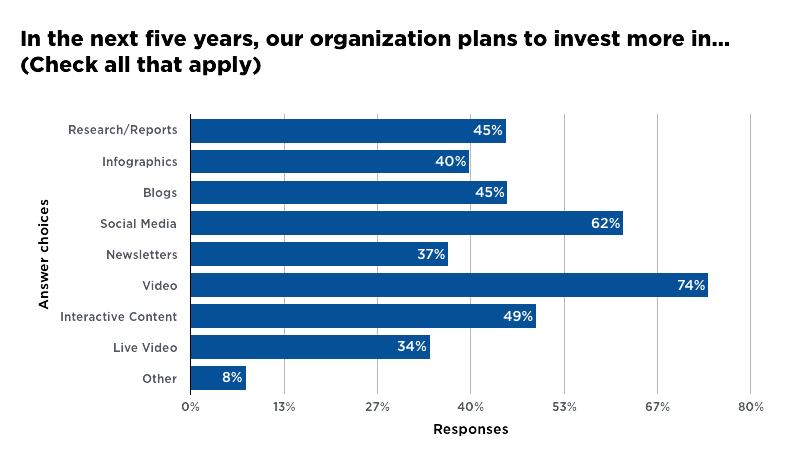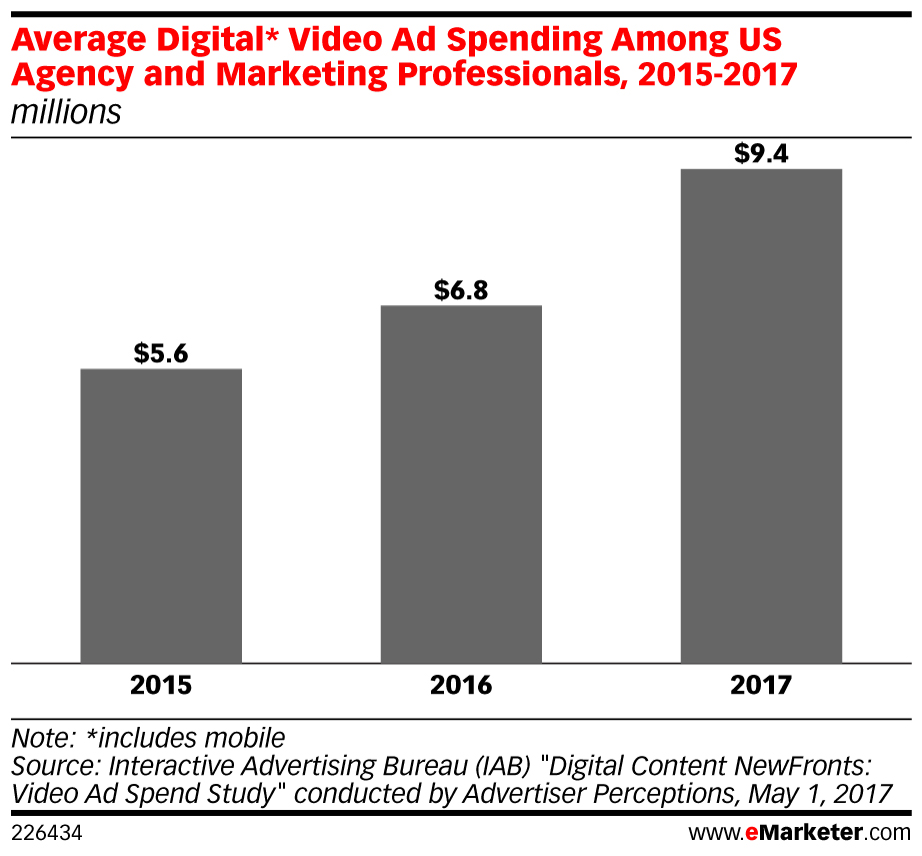Brands
Survey: Marketers Want More Video. What Else Is New?
This story is part of Contently’s Accountable Content Series, a collection of articles, webinars, case studies, and events we’ve designed to help marketers deliver measurable brand impact and business outcomes with content. To see more content in this series, click here.
Let’s play a little game. Can you guess what year this lede is from?
“There’s no doubt that online video marketing is on the rise. Numerous studies and statistics prove that video works. In fact, Forrester Research found that videos were 50 times more likely to receive an organic first page ranking than traditional text pages. That’s a pretty impressive stat!”
How about this one?
“You’d have to be living under a rock with the Geico guy not to notice that videos are taking over the online marketing world. Every marketing and SEO blog is talking about online video marketing and every third company exec you talk to is planning to shift marketing dollars to an online video campaign.”
If you guessed 2010 and 2012, respectively, you’d be right. But if I told you they were from 2016 and 2017, would you blink? Video has been the talk of the marketing world for years. But could it finally break through over the next five years as a regular marketing tactic?
There’s no doubting that video is a big part of the internet’s future. By 2019, video is expected to account for 80 percent of all web traffic. Facebook—which accounts for a huge portion of mobile traffic—has said it will be “all video” in five years. A recent Contently survey showed that, in the next five years, senior marketers plan to invest in video more than any other type of content.

Even though advertisers have been talking up digital video for almost a decade, it seems that their spending is finally catching up. According to the IAB, media buyers are spending 67 percent more on video marketing than they did in 2015. In total, video makes up 56 percent of digital budgets.

In spite of this push for video, widespread adoption is still very much in progress. According to the Content Marketing Institute, only 60 percent of B2B and B2C marketers use video (compared to 83 percent and 85 percent for social media content, respectively).
For any marketer that has tried to make video a bigger part of their content strategy, they know the hard truths of the medium: it’s complicated, expensive, and difficult to measure. While the interest is there, the ability to execute consistently isn’t.
That said, there are new formats that have made video a bit easier. Shortform videos like motion graphics optimized for social have gotten more traction as cheaper investments. When it comes to live video, the lower standards for quality have made it easier for marketers to experiment. And emerging technology platforms like brightcove and Vidyard are trying to make the creation, management, and measurement of video more cost-effective.
But it’s worth asking if all this desire to invest will ever translate to meaningful content, or if video will remain nothing more than a glossy pipe dream for most marketing teams. If video is still “on the rise” in 2020, we’ll have our answer.
Get better at your job right now.
Read our monthly newsletter to master content marketing. It’s made for marketers, creators, and everyone in between.




